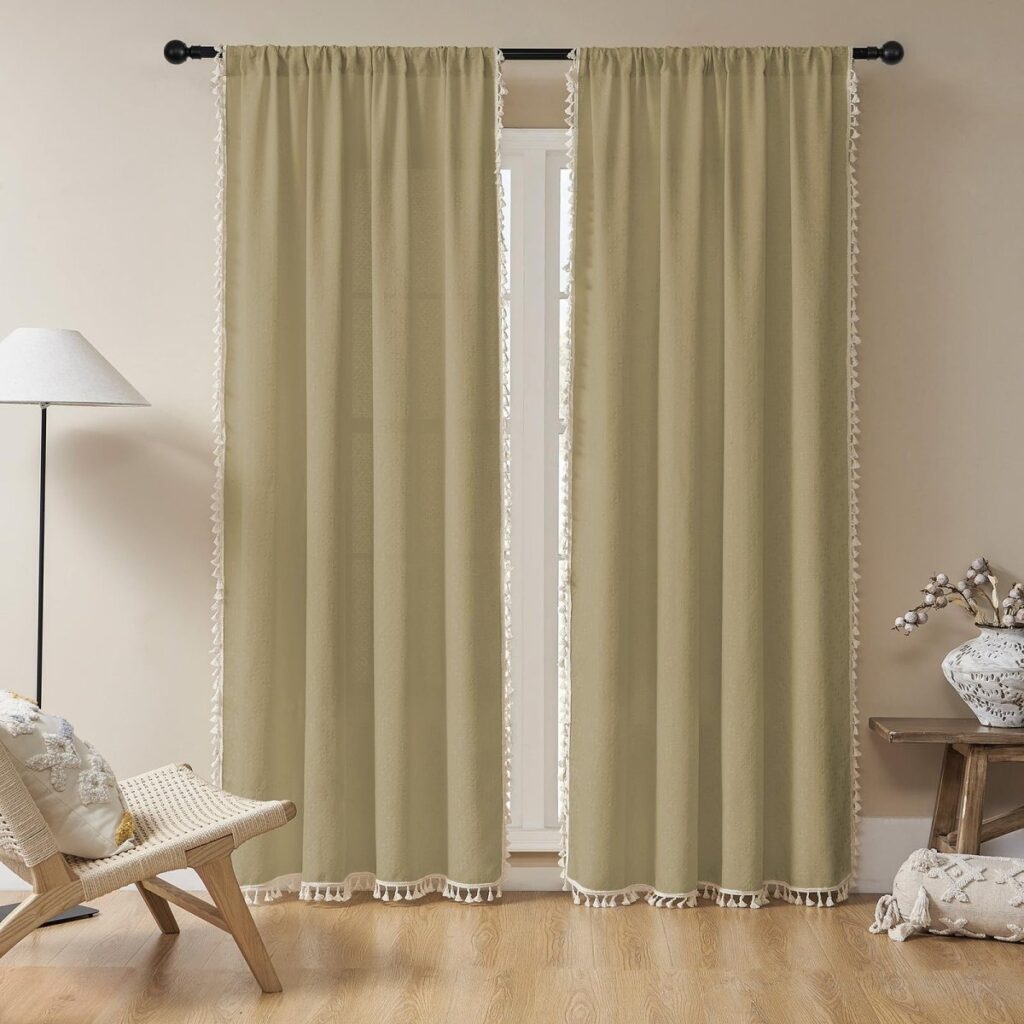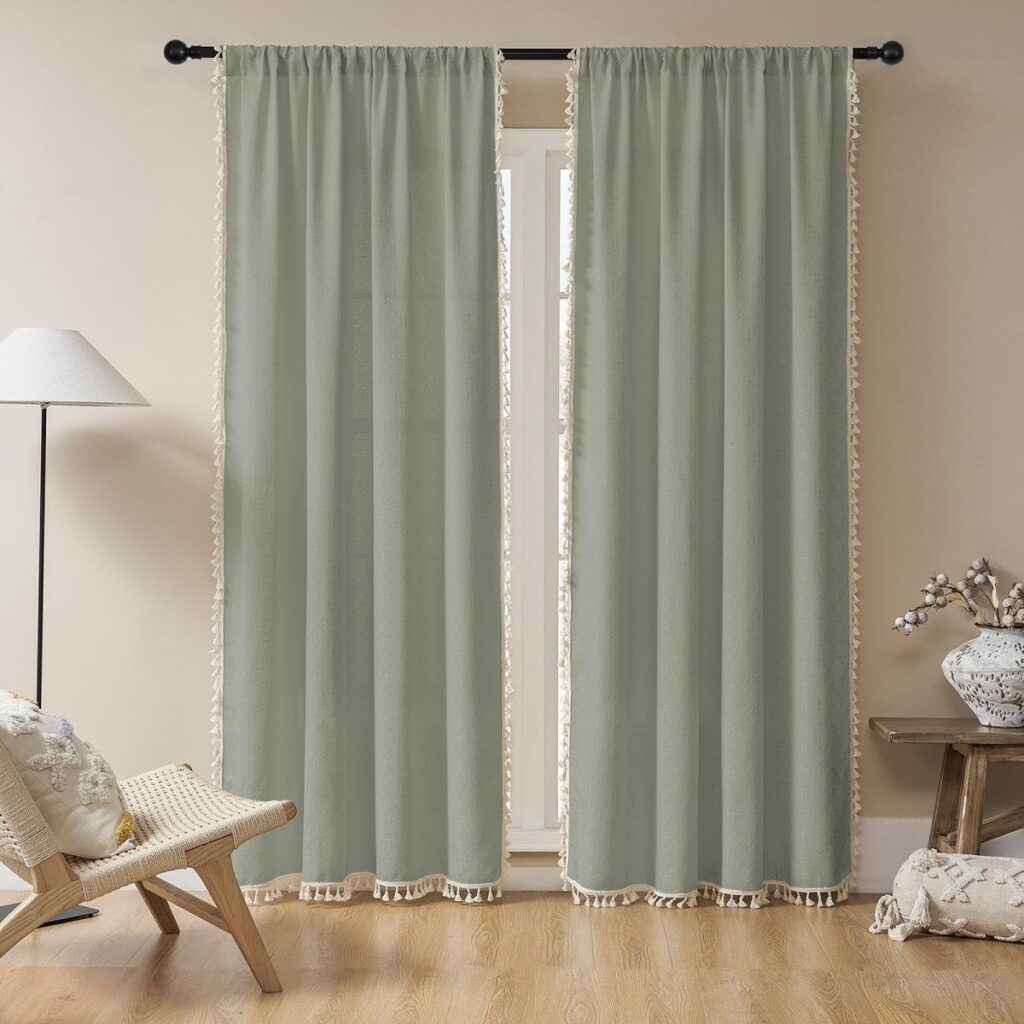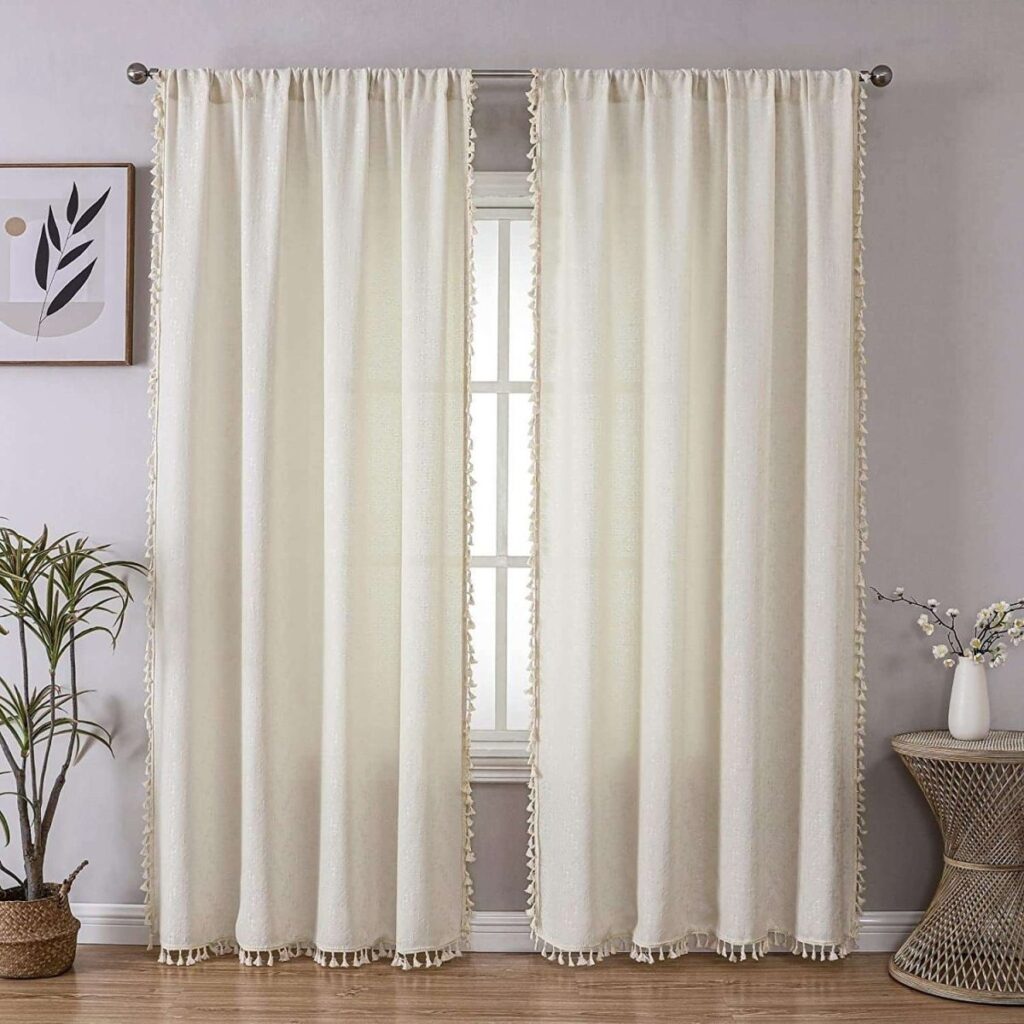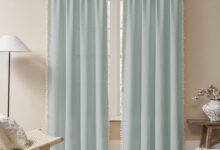
Farmhouse Curtains for Every Room
Farmhouse curtains bring warmth, simplicity, and timeless charm to any living space. These window treatments have become increasingly popular as homeowners seek to create cozy, inviting environments that blend rustic appeal with modern comfort. Whether you’re renovating a country cottage or adding character to a contemporary apartment, farmhouse curtains offer versatile solutions that complement various design preferences while maintaining their distinctive aesthetic.
The beauty of farmhouse curtains lies in their ability to transform ordinary rooms into welcoming sanctuaries. From the kitchen to the bedroom, these curtains feature natural textures, neutral palettes, and classic patterns that evoke a sense of nostalgia and tranquility. Understanding how to select, style, and maintain farmhouse curtains ensures you’ll make informed decisions that enhance your home’s atmosphere. This guide explores everything you need to know about incorporating farmhouse curtains into every room, helping you achieve that perfect balance between functionality and farmhouse elegance that makes a house feel like home.
Table of Contents
Understanding Farmhouse Curtains
Farmhouse curtains represent more than simple window coverings—they embody a design philosophy rooted in practicality and understated beauty. These curtains typically feature relaxed silhouettes, muted color schemes, and textures that reflect agricultural heritage. The farmhouse aesthetic prioritizes function alongside form, creating spaces that feel lived-in rather than overly curated. This approach to window treatments emphasizes natural materials, simple construction, and designs that allow light to filter gently through rooms while maintaining appropriate privacy levels.
Definition and History
Farmhouse curtains originated in rural American homes where practicality dictated design choices. Early versions used readily available materials like cotton, linen, and muslin, often featuring simple patterns or remaining unadorned. These curtains served dual purposes: controlling light and temperature while adding softness to utilitarian spaces, establishing traditions that continue influencing contemporary farmhouse design.
Cultural Significance
The farmhouse curtain style reflects values of simplicity, resourcefulness, and connection to nature that defined agrarian life. This aesthetic has transcended its rural origins to become a mainstream design choice, appealing to those seeking refuge from modern complexity. Today’s farmhouse curtains honor traditional craftsmanship while adapting to contemporary lifestyles, bridging past and present through timeless design elements.

Types of Farmhouse Curtains
Farmhouse curtains come in several distinct styles, each serving specific functional and aesthetic purposes. The three primary categories—light filtering, privacy, and decorative—address different needs while maintaining the characteristic farmhouse look. Understanding these distinctions helps you select curtains that balance your practical requirements with design goals, ensuring each room receives window treatments suited to its unique purpose and lighting conditions.
Light Filtering Curtains
Light filtering farmhouse curtains use sheer or semi-sheer fabrics like voile, gauze, or lightweight linen to soften natural light without blocking it completely. These curtains create an airy, bright atmosphere while reducing glare, making them ideal for living rooms and kitchens where maintaining connection with outdoor views matters as much as managing sunlight intensity.
Privacy Curtains
Privacy-focused farmhouse curtains utilize heavier, opaque materials such as canvas, thick cotton, or lined fabrics to shield interiors from outside view. These curtains work particularly well in bedrooms and bathrooms where seclusion is essential, often featuring classic patterns like ticking stripes or buffalo check that maintain farmhouse character while providing complete coverage.

Decorative Curtains
Decorative farmhouse curtains prioritize visual appeal, incorporating ruffles, lace trim, embroidered details, or distinctive patterns like gingham and florals. These treatments add personality and texture to spaces, frequently appearing as café curtains, valances, or tie-backs that frame windows without dominating them, perfect for adding farmhouse charm to any room.
Choosing the Right Fabric
Fabric selection fundamentally impacts both the appearance and performance of farmhouse curtains. The material you choose determines how curtains drape, filter light, withstand wear, and respond to cleaning. Natural fibers like cotton and linen deliver authentic farmhouse texture and breathability, while synthetic options offer durability and easy maintenance. Blended fabrics combine advantages from both categories, providing balanced solutions for high-traffic areas or specific functional needs. Consider each room’s lighting requirements, humidity levels, and usage patterns when selecting curtain fabric to ensure your choice supports both practical demands and aesthetic vision.
Synthetic Fabrics
Synthetic materials like polyester and nylon resist wrinkles, fading, and moisture damage while requiring minimal upkeep. These fabrics work well in kitchens and bathrooms where humidity and frequent cleaning are concerns. Modern synthetic farmhouse curtains often mimic natural textures convincingly while offering superior colorfastness and affordability, though they lack the breathability and organic feel of natural fibers.
Natural Fabrics
Cotton, linen, and muslin provide authentic farmhouse character with their irregular textures and natural drape. These breathable materials age beautifully, developing soft patinas over time. Linen offers exceptional durability and light-filtering properties, while cotton provides versatility across various weights. Natural fabrics may require more careful laundering and can fade with sun exposure, but their genuine texture justifies the additional maintenance for many homeowners.
Blends and Mixes
Cotton-polyester blends and linen-rayon combinations deliver practical compromises, merging natural aesthetics with synthetic resilience. These fabrics resist wrinkles better than pure natural fibers while maintaining softer textures than full synthetics. Blended curtains suit busy households needing farmhouse style without intensive care requirements, offering balanced performance that accommodates everyday living while preserving the desired rustic appearance.
Designing with Farmhouse Curtains
Successful farmhouse curtain design requires thoughtful coordination of colors, patterns, proportions, and complementary elements. The goal is creating cohesive window treatments that enhance your room’s existing features while introducing farmhouse character without overwhelming the space. Strategic design choices ensure curtains integrate seamlessly with furniture, wall colors, and architectural details. Consider how curtain length, fullness, and hardware contribute to overall visual impact, balancing simplicity with interest through careful selection of patterns and textures that reflect farmhouse sensibilities while accommodating your personal style preferences.
Color and Pattern Coordination
Farmhouse curtain colors typically draw from neutral palettes—whites, creams, grays, and soft earth tones—that create calm, unified spaces. Introduce patterns like stripes, checks, or subtle florals sparingly to add visual interest without disrupting tranquility. Match curtain tones to dominant room colors or select complementary shades that bridge multiple elements, ensuring window treatments enhance rather than compete with existing décor. Many homeowners find that brands like Joydeco offer diverse pattern options that make coordinating farmhouse country curtains with existing room elements more straightforward.
Size and Shape
Proper curtain dimensions dramatically affect room proportions and farmhouse authenticity. Floor-length panels create elegant vertical lines, while café curtains suit casual kitchen settings. Mount rods several inches above window frames and extend them beyond frame width to maximize light and create illusions of larger windows. Choose fullness ratios between 1.5 to 2 times window width for appropriate gathering without excessive bulk.
Accessory Integration
Hardware and embellishments complete farmhouse curtain design. Select rods in matte black, oil-rubbed bronze, or natural wood finishes that reinforce rustic aesthetics. Incorporate tiebacks using jute rope, fabric strips, or wrought iron holdbacks to add functional charm. Layer curtains with wooden blinds or woven shades for enhanced light control while maintaining the layered, collected look characteristic of authentic farmhouse interiors.
Maintenance and Care
Proper maintenance extends the lifespan of farmhouse curtains while preserving their appearance and functionality. Regular care prevents dust accumulation, fabric deterioration, and color fading that diminish curtain quality over time. Establish cleaning routines appropriate to your curtain fabrics, addressing spills and stains promptly to avoid permanent damage. Different materials require specific care approaches—natural fibers need gentler handling than synthetics, while lined curtains demand different techniques than single-layer treatments. Understanding repair options helps you address minor issues before they necessitate complete replacement, maximizing your investment in quality window treatments.
Cleaning Tips
Vacuum curtains monthly using upholstery attachments to remove dust and prevent buildup. Machine wash cotton and synthetic curtains in cold water on gentle cycles, while dry cleaning linen and delicate fabrics. Steam wrinkles instead of ironing when possible to avoid heat damage. Test cleaning solutions on inconspicuous areas first, and always follow manufacturer care labels to prevent shrinkage or color loss.
Repairing and Replacing
Mend small tears with fabric patches or fusible webbing applied from the curtain’s back side. Replace broken grommets or hooks using repair kits available at fabric stores. Reinforce weak seams with hand stitching before they unravel completely. When sun damage causes significant fading or fabric becomes brittle, replacement becomes necessary—typically after five to seven years depending on sun exposure and fabric quality.

Creating Your Perfect Farmhouse Home
Farmhouse curtains offer transformative potential for every room in your home, delivering timeless style that balances rustic charm with practical functionality. By understanding the distinctions between light filtering, privacy, and decorative options, you can select treatments that address each space’s unique requirements while maintaining cohesive farmhouse aesthetics throughout your home. The fabric choices you make—whether natural fibers for authentic texture, synthetics for easy maintenance, or blends for balanced performance—directly impact both daily living comfort and long-term satisfaction with your window treatments.
Successful farmhouse curtain implementation extends beyond simple fabric selection to encompass thoughtful design coordination, proper sizing, and appropriate hardware choices that complete the look. Regular maintenance preserves your investment, keeping curtains fresh and functional for years while preventing premature replacement. Whether you’re creating a cozy bedroom retreat, a welcoming kitchen gathering space, or a serene living area, farmhouse curtains provide versatile solutions that adapt to various rooms and purposes. Embrace these design principles to craft inviting spaces that reflect farmhouse values of simplicity, warmth, and enduring beauty, transforming your house into a home that welcomes family and guests with genuine comfort and understated elegance.








